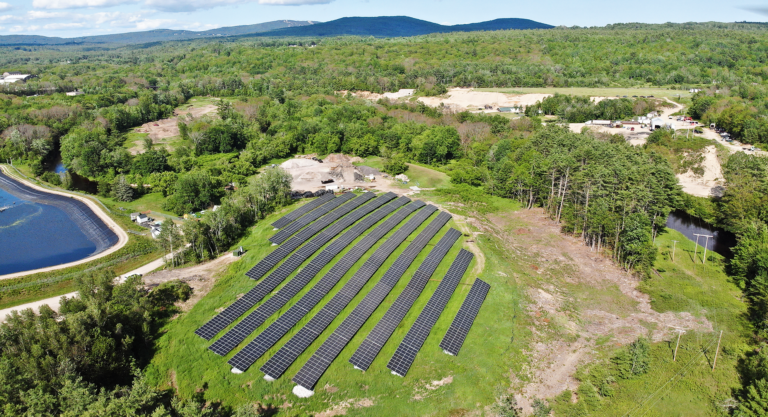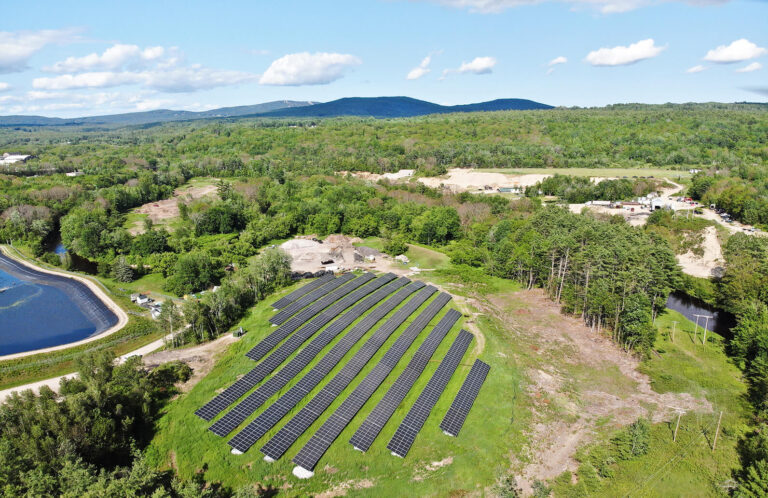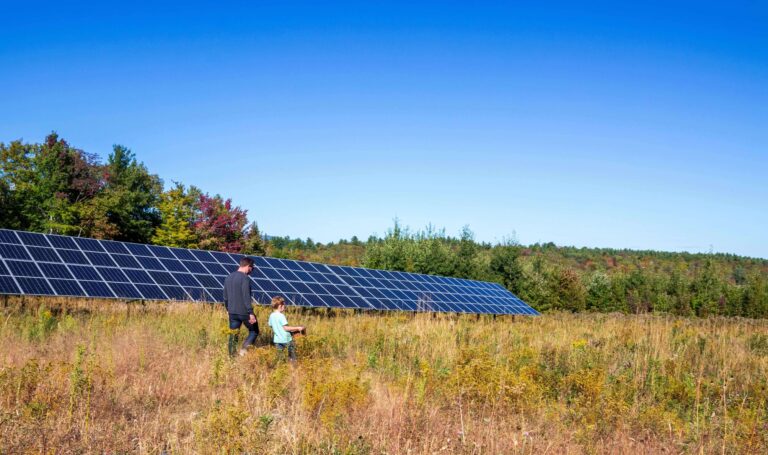So you want to host a community solar project! It’s a great choice, and we’re here to help you understand just what that process looks like.
Now, your experience will be a bit different depending on whether you have a rooftop or piece of land in mind for the project. The following are all the ways you can be a project host:
- Rooftop
- Ground mount
- Battery storage
We’ll start with rooftops, and if you’re a landowner, you can skip ahead to the next section! If you’re interested in a battery energy storage system (BESS), there’s a little information on that at the end.
The Rooftop Process
Assessing the Property
The first thing you’ll need to do is have your property assessed. If you already own the property, you can reach out to a solar developer like UGE, and they will complete a preliminary feasibility study of the site to ensure it meets the minimum criteria for installation. In the case of rooftop projects, our basic criterion is simple: you need 30,000 sq. ft. of flat space on a building located in both a state and electric utility with a community solar program. The developer will then examine the economics of the site based on policy and observations from the feasibility study to determine if the project would be viable for the developer; if the results are positive, they will form a potential lease area to discuss with you based on a solar design model.
Developing the Project
Should you decide to move forward with the project, you will sign a letter of interest (LOI) to proceed. From that point, your project moves into the development stage, which typically lasts between 10 to 14 months for a rooftop project. The development team will apply for interconnection and run a structural assessment (a more in-depth feasibility study) while you look over a potential lease. It is entirely possible that the assessment will determine that the project cannot be built, in which case your project has met its end, but if the assessment looks good, your project is ready to move forward. You’ll be given a lease to look over while interconnection takes place—once that lease is signed, your project is a go!
Installing the Project
Following Notice to Proceed (NTP), which is given after interconnection has happened, installation can finally begin. The timeline for this process is entirely dependent on the size of the project, so it can take anywhere from 2 to 4 months to complete installation. Once that is done, your project is complete and can be turned on, at which point, you will begin to receive your rent payments. And that’s how you become a rooftop project host!
The Ground Mount Process
Assessing the Property
The first thing you’ll need to do is have your property assessed; should your property be a brownfield—a property rendered unusable by the presence or potential presence of a hazardous contaminant—this process will look similar to that for a regular piece of land. If you already own the property, you can reach out to a developer, and they will complete a feasibility study of the site to ensure it meets the criteria for installation. In the case of ground mount projects, the most basic criterion your property must meet is that it contains an area of 10+ acres of contiguous, buildable land located in both a state and electric utility with a community solar program. The developer will then examine the economics of the site based on policy and observations from the feasibility study to determine if the project would be viable for the developer; if the results are positive, they will form a potential lease area to discuss with you based on a design model.
Developing the Project
Should you decide to move forward with the project, you will enter into lease negotiations with the developer until you are both happy with the terms. Once that lease is signed, your project is a go! From that point, your project will move into the development stage, which typically lasts between 12 to 24 months for a ground mount project, over the course of which you will receive small lease payments. A lot happens during this time, but it’s important to know that the development team will apply for interconnection and run an environmental assessment to confirm that there would be no issues with building a project on the land. The team will also run a title search review, and you will most likely be asked questions regarding the site to better understand its history. Later in the development process, permitting will be secured, and the developer will work with the community through events like planning board meetings to better understand the requirements specific to the area and ensure locals benefit from the project.
Installing the Project
Following Notice to Proceed (NTP), which is given after interconnection has happened, installation can finally begin. The timeline for this process is entirely dependent on the size of the project, so it can take anywhere from 9 to 12 months to complete installation. Once that is done, your project is complete and can be turned on, at which point, you will begin to receive your rent payments. And that’s how you become a ground mount project host!
All About BESS
In both rooftop and ground mount projects, we offer the option of adding a battery energy storage system (BESS) to the project. BESSs help make projects more reliable and resilient since they can store excess energy produced during peak periods to be used later when production has waned e.g., cloudy days, nighttime, etc. And if you have the ability, we can absolutely combine rooftop, ground mount, and BESS into one big project! To learn more about BESSs and what they can do for you, read this quick explainer.




